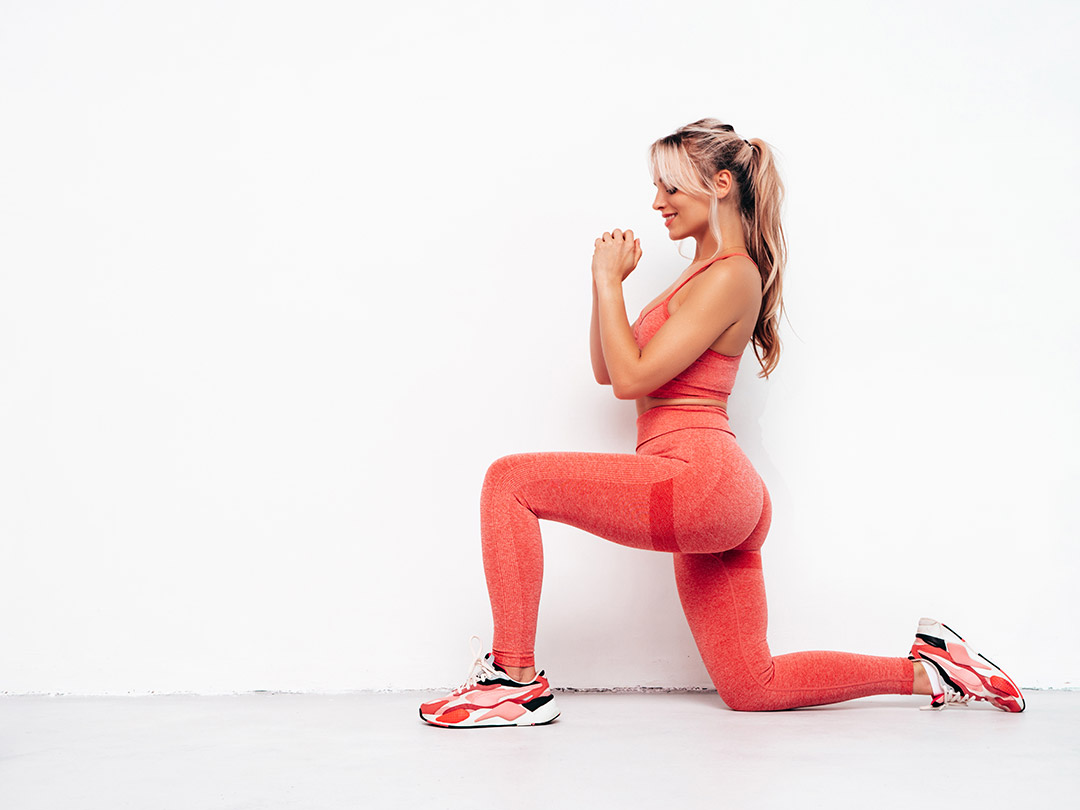The theme of how to increase glutes It may be among the most treated in the world of women’s fitness. Unfortunately, this topic is surrounded by bad information, a lot of marketing and false myths that continue to be misinterpreted. It is very common to see girls training glutes with very light loads, miles of repetitions and little rest between sets, but is this how we should perform glute exercises?
In this article I will try to explain how to increase your glutes in the gym with effective movements and exercises. First of all, in order for us to understand how to enlarge the buttocks, it is necessary to quickly review the anatomy and physiology of the body (particularly the buttocks), so that we can truly understand what we are doing.
buttocks
The glutes are mainly made up of 3 muscles:
- gluteus maximus (the biggest and strongest)
- gluteus medius (upper portion)
- gluteus minimus (it is very small, it is placed below the other two)
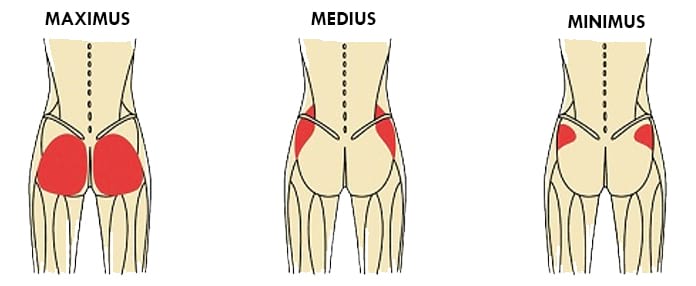
The glutes (and mainly the gluteus maximus) can be defined as the strongest muscles in our bodyFurthermore, for certain women, it is also an area of fat accumulation. Yeah We activate especially when we run fast., we jump, we climb the stairs, etc. Being a big and strong muscle, what could be the best way to train it? A large muscle responds to large stimuli, therefore it is strange that the best solution to develop glutes is to perform small exercises with few loads.
To train the glutes in the best way, it is necessary to understand their functions, so that by properly overloading the movements we can enlarge them. The main functions are:
- hip extension (bring your legs back)
- hip external rotation (rotate the leg externally)
- hip abduction (move the leg laterally)
- pelvic retroversions (“push” with the pelvis forward)
Now that we know the movements, we are going to describe the main exercises to train the glutes according to these patterns.
squats
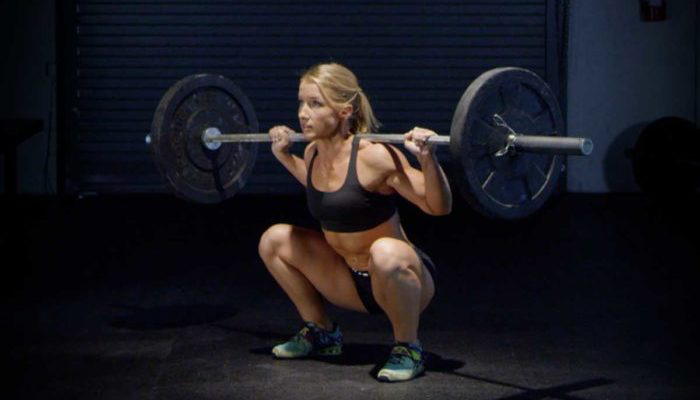
The squats They are a hip, knee and ankle extension movement. The tension in the glutes is maximum in stretching (when we are down), the deeper the squats, the greater the stimulus on the glutes.
So that the squats come out deep, the knees must necessarily go forward and surpass the feet or the hips must go very far back. Many people still think that going over the balls of your feet hurts, In reality it is a false myth already dispelled several times, although it is still quite strong in the imagination of the gym world. In fact, an excessive backward movement of the hips is much more «dangerous», since the torso will be placed in a very horizontal position, increasing the shear forces on the lower back. This does not happen if the knees can go forward, allowing the torso to be kept straighter.
How much we can lower in the squats also depends on the mobility we have.. It is very important to have good mobility in the ankles and hips. If we do not have it in the ankles, we can use weightlifting shoes (with a 1-3 cm heel) or put a lift under the heels. This will help us simulate dorsiflexion and allow us to move forward with the tibias. We recommend performing squats with medium-high loads, which allow us to do between 6 and 10 repetitions.
hip thrust
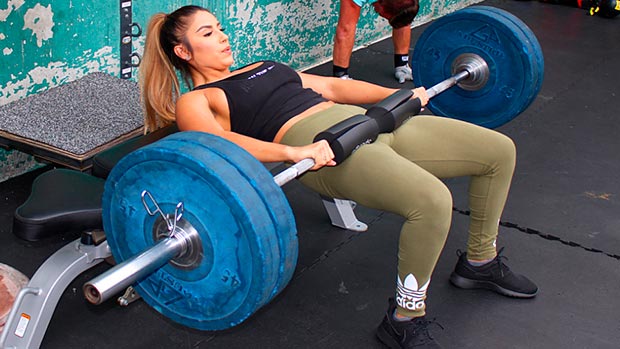
The Hip Thrust is an exercise that has become very fashionable in recent years. It is a hip extension movement without any intervention from the other joints (knees and ankles), the gluteus is activated at the moment of maximum contraction when we are up. This type of stimulus is unique in its kind, because all other exercises (squats, lunges, deadlifts) stimulate the glutes in stretch. We can consider it Hip Thrust an isolation exercise for the glutes, since we should not have any other muscles activated. It is very important to keep this in mind because many girls tend to want to grow their glutes without developing their legs too much: for example, with squats and deadlifts, the quadriceps and hamstrings respectively are highly stimulated.
The general Hip Thrust technique provides:
- Position the bar or weight above the hips
If using a bar with clubs, I recommend using a thick pad to avoid discomfort.
- Support yourself with your shoulder blades on a bench (or about a few steps)
the ideal height we should make ourselves form a straight line between the torso and the thighs when we are up
- Position your feet so that your shins are vertical.
A 90º angle must be formed between the tibia and the thigh. If we perceive too much tension in the quadriceps or hamstrings, we can adjust the placement of our feet until we find the ideal position. The Hip Thrust is an excellent exercise to increase glutesIts only flaw is that it can be uncomfortable if you do not have a specific machine (very difficult to find in gyms) when high loads are reached, therefore we recommend series of 8-15 or more repetitions.
Semi-Sumo Deadlift
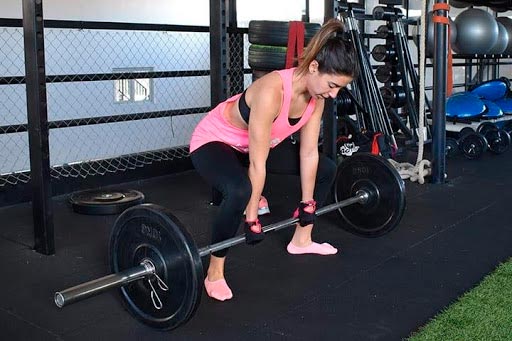
he semi-high deadlift, as the name suggests, is an intermediate version between a classic deadlift and a sumo deadlift. The initial position with legs apart and feet slightly externally rotated allows greater activation of the glutes, which become the main motor of the movement.
To perform the exercise correctly:
- the bar loaded with clubs must be positioned over the center of the foot;
- the legs are slightly wider than the shoulders and the feet are slightly externally rotated;
- hands are inside the legs shoulder-width apart;
- lift the bar while moving your knees, hips and back at the same time;
- go down as if it were a copy of the up movement.
Why semi-sumo and not direct sum? Well, because to perform the sumo version a great mobility of the hips in external rotation is necessary and not everyone has it, in addition the sumo version activates the adductors (inner thigh) more compared to the sumo version which for many activates the glutes more. Reps should be medium-low with heavier loads. Performing high repetition work in this exercise could be too difficult from a cardiovascular point of view and not safe from a joint point of view.
Bulgarian Squat
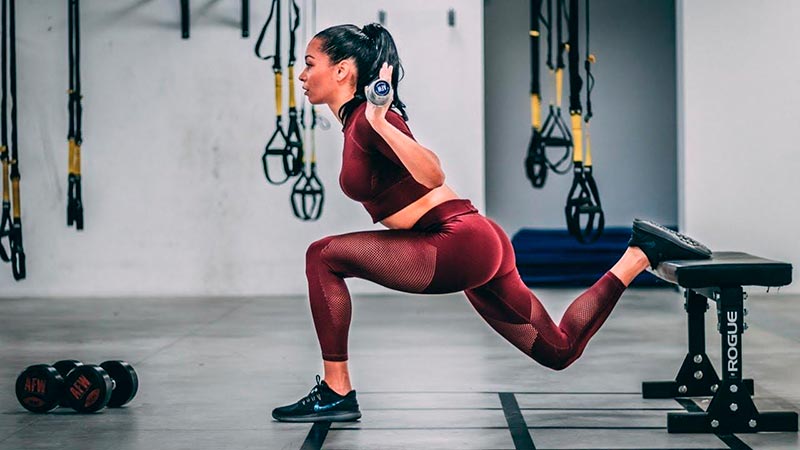
The bulgarian squat It is a version of a unilateral squat, that is, you work one leg at a time. The exercise can be performed with dumbbells, barbell or multipower, but all versions have some technical measures in common, especially if we want to work the glutes. To put all possible focus on the glutesIt is good to put the technical instructions into practice:
- the distance between the two feet should be quite long
- keep the vertical tibia of the front leg, pushing with the heel against the floor to activate the glutes more
- Lean your torso forward a little.
It is a much more difficult exercise than it seems.If it is done with dumbbells, we recommend supporting yourself with the hand on the side of the forward leg, so that with the other hand we can grab the dumbbell. Holding the weight with the hand opposite the working side will activate the glutes even more to stabilize the hip. With this exercise it is possible to work both with high loads and few repetitions (5-8), and with lighter loads and medium-high repetitions (10-15).
Gluteal hyperextension
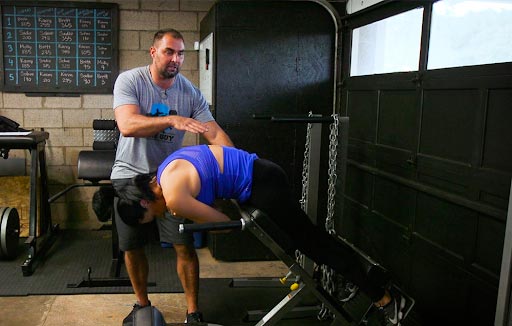
This exercise is not often seen in gyms, however It is very effective for increasing the buttocks. Hyperextension is usually used to work the back (spinal erectors), but by simply modifying the height of the machine and the position of the feet, we can transform this exercise into a glute builder.
- Position the machine block so that it is below your hips;
- Spread your legs and externally rotate your feet (it’s okay if part of your foot comes off the platform);
- stick your neck to your chin and keep your lower back neutral
- Get up using your hips and ending with a retroversion of the pelvis.
At first it may be a complicated exercise, but over time you will see how the glutes get on fire. We recommend learning to perform the exercise well with body weight, then we can start adding loads such as plates or bars. We can perform sets of maximum repetitions with body weight and 8-15 repetitions with loads.
How to increase glutes: exercises
Now we just need to create a glute routine in which we add the aforementioned exercises in the best way possible.
Let’s take a 2-day-a-week routine as an example. In this case, we are not going to include the other exercises for other parts of the body in the routine.
Day 1
- Barbell squat: 6×20,15,12,10,8,6
- Hip Thrust with bar or disco: 4×12,10,8,6 + hold to failure
- Bulgarian Squat: 4×15 (per leg)
Day 2
- Semi-sumo Deadlift: 4×15,12,10,8
- Hip thrust: 4×12,10,8,6 + hold to failure
- Gluteal hyperextension: 4×12,10,8,6
We can complete the routine by adding exercises for the upper body, perhaps distributing the muscle groups over the two days. To progress we try to add weight when possible with equal repetitions, once the weight stagnates, we can add more series.

